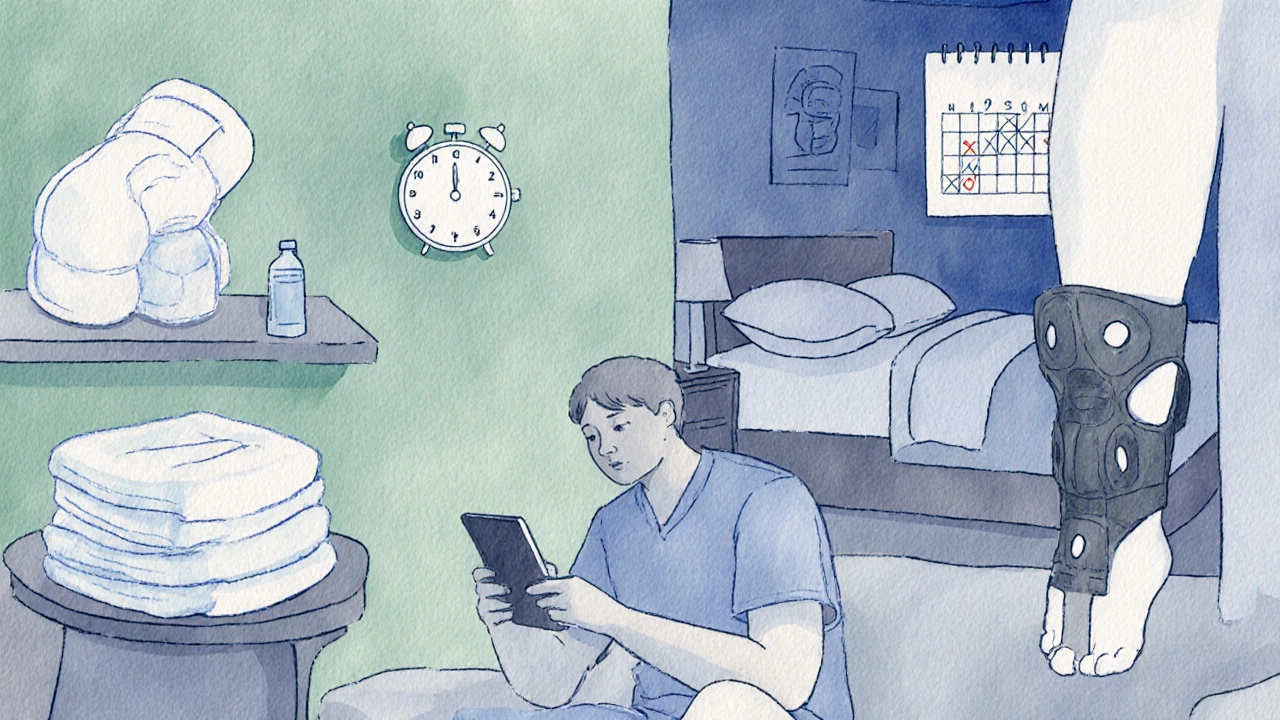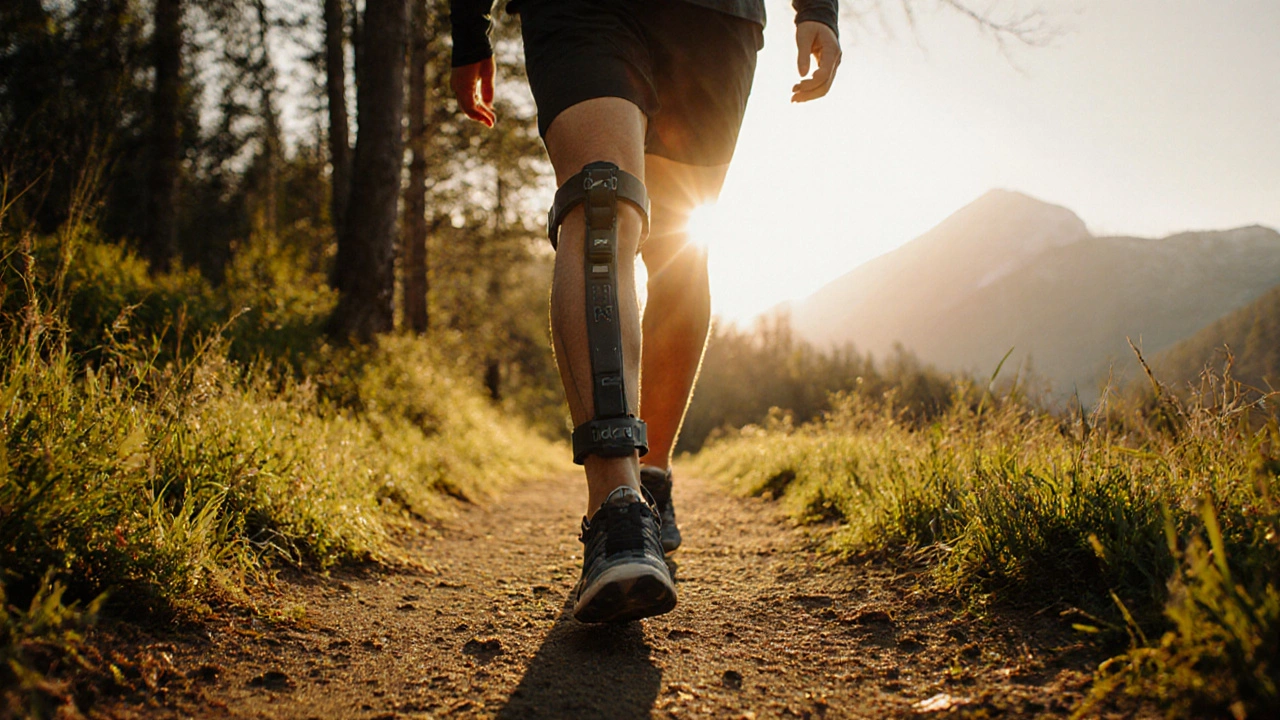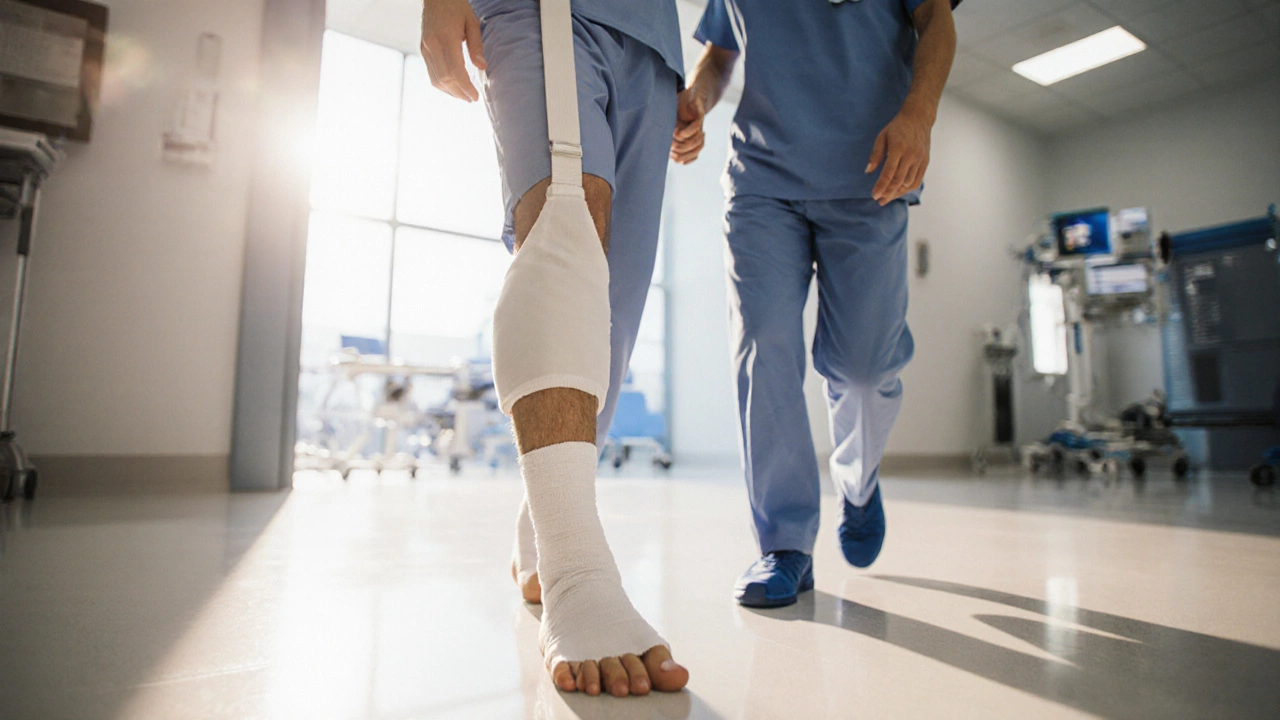Knee Surgery Recovery Timeline Calculator
Select Your Surgery Type
Recovery Timeline
Focus on gentle movement, ice therapy, and elevation. Begin simple range-of-motion exercises as prescribed.
Begin physical therapy sessions. Start with stationary cycling. Continue icing and elevation. May begin partial weight-bearing if cleared by surgeon.
Continue physical therapy. May begin light walking with assistive device. Focus on muscle strengthening exercises.
Begin stationary cycling. Continue physical therapy. May be cleared for full weight-bearing if recovery is progressing well.
Begin light cardio exercises like swimming or walking. May start low-impact activities. Continue physical therapy for full strength recovery.
Gradually introduce higher-impact activities as cleared by your surgeon. Focus on maintaining strength and flexibility.
After a knee operation, the excitement of getting back to normal life can turn into frustration if recovery doesn’t go as planned. Most of the setbacks aren’t medical complications-they’re simple missteps that anyone can avoid with the right knowledge. Below you’ll find the most common blunders, why they matter, and practical ways to sidestep them so you can heal faster and stronger.
Quick Takeaways
- Never skip scheduled physical therapy sessions.
- Follow the surgeon’s weight‑bearing timeline, not your gut feeling.
- Control swelling with regular ice and elevation.
- Use the prescribed brace correctly; wrong fit can stall healing.
- Watch for warning signs of blood clots or infection and act fast.
Understanding the Recovery Landscape
When you walk out of the operating theatre, the joint you just repaired needs a delicate balance of protection and movement. The body’s natural healing phases- inflammation, tissue formation, and remodeling- each have specific requirements. Missing a step or pushing too hard at the wrong time disrupts this process, leading to stiffness, pain, or even re‑injury.
Knee surgery is a medical procedure that repairs damaged structures within the knee joint, such as ligaments, meniscus, or cartilage. Whether it’s an ACL reconstruction, meniscus repair, or total knee replacement, the post‑op protocol shares many core principles.
Mistake #1: Skipping Physical Therapy
Physical therapist is a a licensed professional who designs and supervises rehabilitation programs to restore mobility, strength, and function after injury or surgery is your best ally, not an optional extra. Many patients think they can “do it themselves” with YouTube videos, but a therapist tailors exercises to your specific surgery, swelling level, and pain tolerance.
Skipping sessions delays the restoration of range of motion, weakens the surrounding muscles, and often leads to compensatory movement patterns that can strain other joints.
Mistake #2: Jumping Into Activity Too Early
Adrenaline after surgery can be misleading. Rushing to run, hike, or even jog before the tissues have sufficiently healed can cause the sutures or grafts to fail. The typical protocol for an ACL repair, for example, limits high‑impact activity for at least six weeks.
Instead, follow a graduated plan: start with gentle knee bends, progress to stationary cycling, and only introduce impact when cleared by your surgeon.
Mistake #3: Ignoring Swelling
Swelling is the body’s natural response, but unchecked edema stalls muscle activation and restricts movement. If you notice the joint feeling “puffy” after the first 48hours, it’s a signal to increase your Ice therapy is a the application of cold packs or cryotherapy to reduce inflammation and pain after injury or surgery routine.
Elevate the leg above heart level whenever possible and avoid prolonged standing.

Mistake #4: Using Ice Incorrectly
Ice is effective, but there are common pitfalls: applying ice directly to the skin can cause frostbite, and leaving it on for more than 20minutes can actually increase swelling once re‑warming begins. The safe method is 15‑minute intervals, with a thin towel as a barrier, repeated every 2‑3hours during the first 72hours.
Mistake #5: Wearing the Wrong Brace
Brace is a an orthopedic device that provides support and limits harmful movements to protect a healing joint should match the surgeon’s prescription. A brace that’s too tight can cut off circulation, while one that’s too loose fails to stabilize the joint.
Adjust straps daily, and inspect for wear. If you feel numbness or increased pain while wearing it, readjust immediately.
Mistake #6: Neglecting Pain Management
Taking prescribed pain medication as scheduled, not just when the pain feels unbearable, keeps inflammation low and allows you to move more comfortably. Skipping doses leads to “pain spikes” that encourage guarding-a protective muscle tightening that reduces joint motion.
Consult your surgeon about tapering the meds; abrupt discontinuation can cause rebound pain.
Mistake #7: Rushing Weight‑Bearing
Weight‑bearing progression is usually measured in stages: touch‑down, partial, then full weight. Jumping straight to full weight before the graft has incorporated can overload the repair site.
Use assistive devices-crutches or a walker-until your surgeon clears you for full load. Pay attention to cues like knee instability or unusual swelling, which suggest you’re moving too fast.
Mistake #8: Forgetting Follow‑Up Appointments
Post‑operative visits allow the surgeon to monitor healing, adjust rehab protocols, and catch early signs of complications. Missing a visit can mean a problem goes unnoticed until it’s harder to treat.
Mark each appointment on your calendar and set reminders; bring a list of any new symptoms, such as increased warmth, redness, or drainage.
Mistake #9: Overlooking Blood Clot Signs
Deep vein thrombosis (DVT) is a rare but serious risk after knee surgery, especially if you’re immobile for long periods. Warning signs include calf pain, swelling that’s more pronounced than usual, and a feeling of warmth.
If you notice these, contact your healthcare provider immediately-early treatment prevents a clot from traveling to the lungs.

Mistake #10: Poor Home Exercise Technique
Even simple exercises like heel slides or quad sets can be done incorrectly, reducing their benefit and potentially harming the joint. Follow the therapist’s video guides, and if something feels off-sharp pain, joint popping-stop and ask for clarification.
Do’s vs. Don’ts: Quick Reference Table
| Do | Don't |
|---|---|
| Attend every physical therapy session. | Skip therapy or replace it with unverified videos. |
| Ice for 15 minutes every 2‑3 hours. | Apply ice directly to skin or leave it on too long. |
| Follow the surgeon’s weight‑bearing timeline. | Rush to full weight without clearance. |
| Wear the prescribed brace correctly. | Use a generic or ill‑fitting brace. |
| Take pain medication as prescribed. | Only take meds when pain becomes severe. |
| Monitor for swelling, redness, or calf pain. | Ignore early signs of infection or DVT. |
Pro Tips to Speed Up Recovery
- Keep a daily log of pain levels, swelling, and activity; patterns help you and your therapist adjust the plan.
- Incorporate low‑impact cardio like pool walking; water supports the joint while allowing movement.
- Focus on hip and core strength; a stable pelvis reduces stress on the healing knee.
- Stay hydrated and maintain a protein‑rich diet to support tissue repair.
- Use compression socks after the first week to aid circulation.
When to Call Your Surgeon
If you experience any of the following, reach out right away:
- Sudden increase in pain that doesn’t improve with medication.
- Swelling that worsens after 48hours despite ice and elevation.
- Fever over 100.4°F (38°C) or chills.
- Redness spreading around the incision.
- Persistent calf tightness or a sensation of warmth.
Mini FAQ
Frequently Asked Questions
How long does swelling usually last after knee surgery?
Swelling peaks around the second or third day and gradually subsides over two to three weeks if you keep up regular icing, elevation, and gentle motion.
Can I drive after knee surgery?
Most surgeons recommend waiting 4‑6weeks before driving, depending on the type of procedure and how well you can operate the pedals without pain or lag.
Is it normal to feel a clicking sound when moving the knee?
A mild clicking can be harmless, but if it’s accompanied by pain, swelling, or a feeling of instability, you should have it evaluated by your therapist or surgeon.
When can I return to the gym?
Light, low‑impact work (cycling, elliptical) can begin after 4‑6weeks. High‑impact activities like running or jumping usually wait 3‑6months, depending on your progress and surgeon’s clearance.
What are the signs of infection after knee surgery?
Look for increasing redness, warmth, foul‑smelling drainage, fever, or a feeling of deep ache that worsens rather than improves.
Recovery after knee surgery mistakes isn’t a race; it’s a carefully paced process. By sidestepping the pitfalls listed above, you give your body the best environment to rebuild strong, functional tissue. Stay informed, stay consistent, and you’ll be back to the activities you love-without the setbacks.
